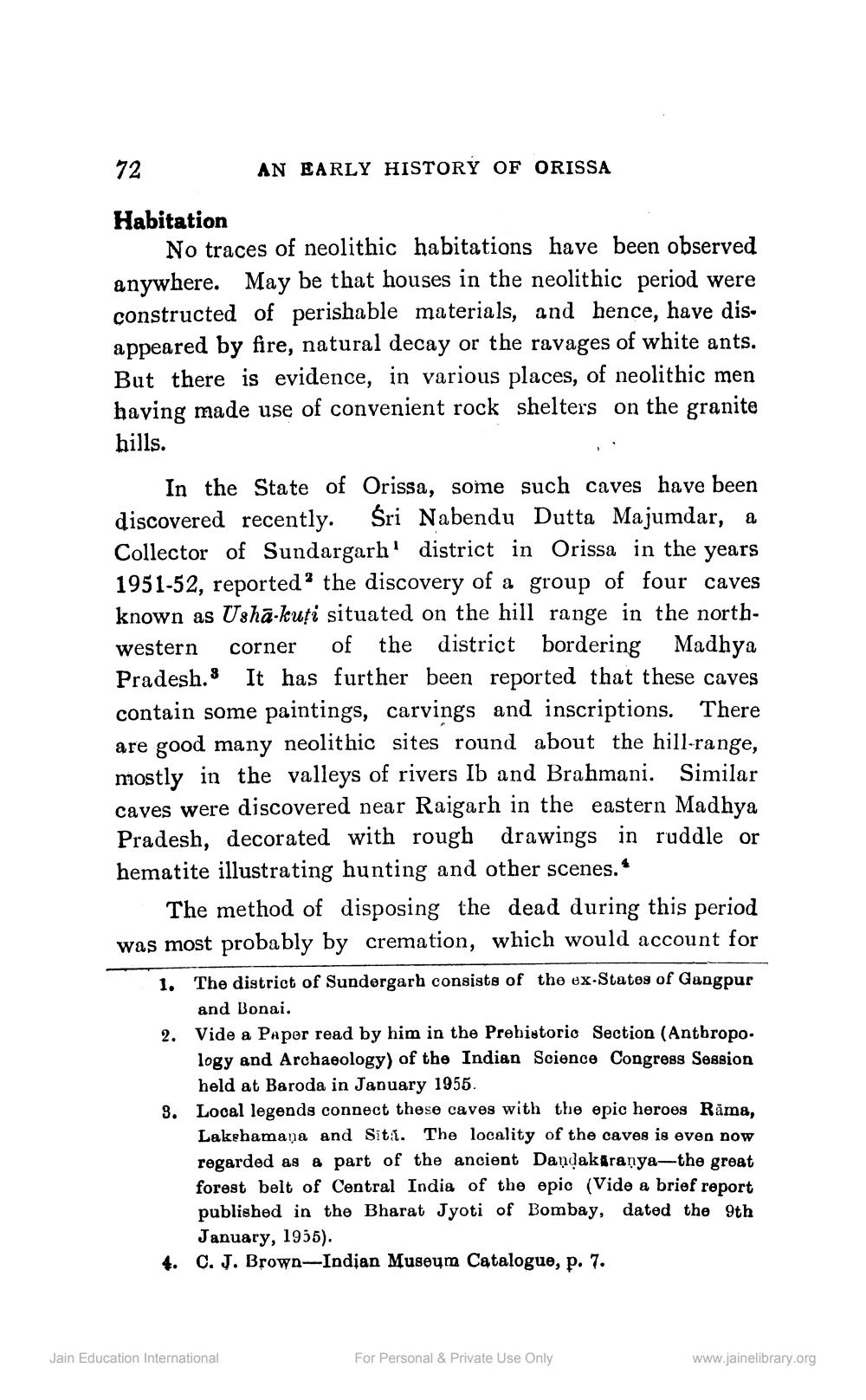________________
72
AN EARLY HISTORY OF ORISSA
Habitation
No traces of neolithic habitations have been observed anywhere. May be that houses in the neolithic period were constructed of perishable materials, and hence, have disappeared by fire, natural decay or the ravages of white ants. But there is evidence, in various places, of neolithic men having made use of convenient rock shelters on the granite hills.
In the State of Orissa, some such caves have been discovered recently. Śri Nabendu Dutta Majumdar, a Collector of Sundargarh' district in Orissa in the years 1951-52, reported’ the discovery of a group of four caves known as Usha-kuți situated on the hill range in the northwestern corner of the district bordering Madhya Pradesh. It has further been reported that these caves contain some paintings, carvings and inscriptions. There are good many neolithic sites round about the hill-range, mostly in the valleys of rivers Ib and Brahmani. Similar caves were discovered near Raigarh in the eastern Madhya Pradesh, decorated with rough drawings in ruddle or hematite illustrating hunting and other scenes.
The method of disposing the dead during this period was most probably by cremation, which would account for 1. The district of Sundergarh consists of the ex-States of Gangpur
and Bonai. 2. Vide a Paper read by him in the Prehistoria Section (Anthropo.
logy and Archaeology) of the Indian Science Congress Session held at Baroda in January 1955. Local legends connect these caves with the epic heroes Räma, Lakebamana and Sit. The locality of the caves is even now regarded as a part of the ancient DandakAranya-the great forest belt of Central India of the epic (Vide a brief report published in the Bharat Jyoti of Bombay, dated the 9th January, 1935). C. J. Brown-Indian Museum Catalogue, p. 7.
Jain Education International
For Personal & Private Use Only
www.jainelibrary.org




